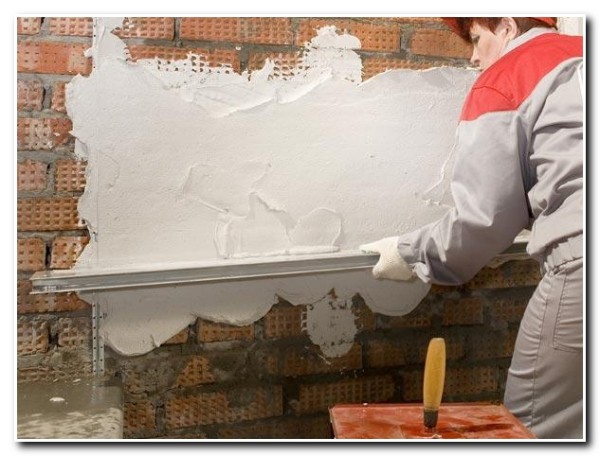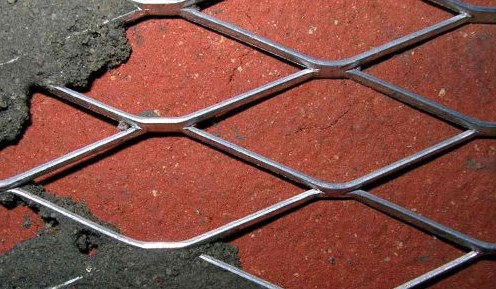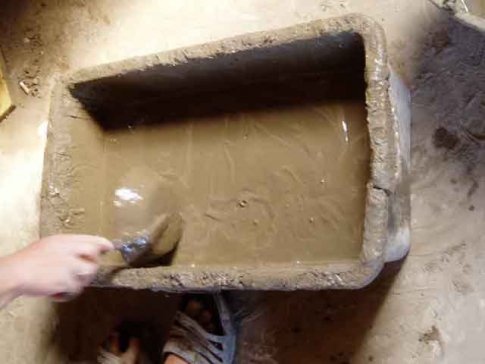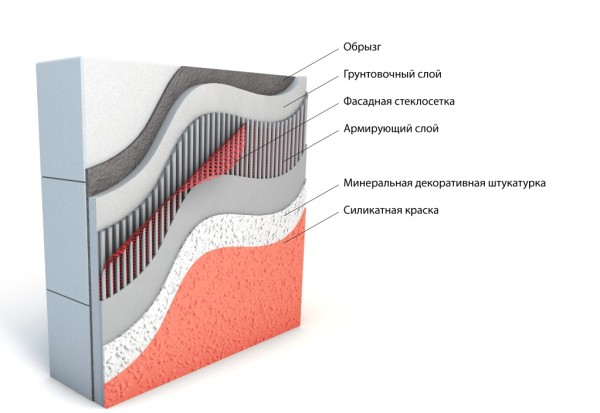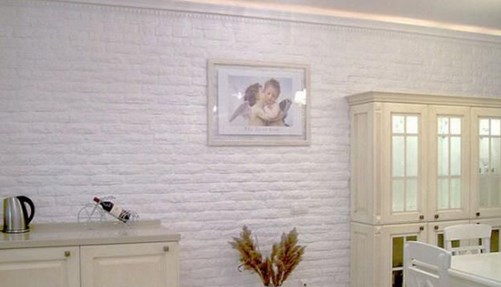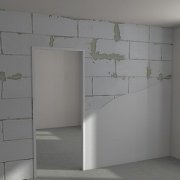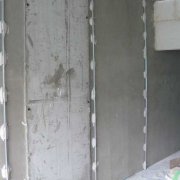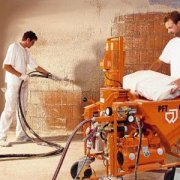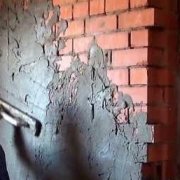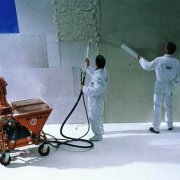Let's consider how to plaster a brick wall
How to plaster a brick wall? For any decoration of the room, the walls are first aligned. This is especially important when laying a brick, when it is not always smooth, has some chips, and the seams between the elements have different thicknesses. The article will tell you the better to plaster brick walls?
The content of the article
Features of the work
Before starting plastering, the unevenness of the wall is determined, which will make it possible to hide these defects when performing work. When applying plaster, the surface should be properly prepared.
She must be:
- Clean.
- Completely dry.
- Durable enough.
- Provide good adhesion to the material.
The type of primer depends on:
- The degree of porosity of the material:
- for dense and smooth bricks, it is better to use a primer, which has improved adhesion properties;
- for brick of medium porosity, a universal primer is applied (see Types of construction primers and their scope) Determine the porosity of the material can be experimentally. To do this, drop water onto a brick. If it dries on the surface from three to 20 minutes, the brick has an average porosity.
- Abilities as a coating absorbs moisture.
Before the brick walls are plastered, a primer made on a mineral basis is applied to them, the cement in it acts as a cementitious element. The coating is applied with a layer of approximately 0.2 millimeters.
Instructions for further work:
- Hooks are attached to the surface, in increments of 250 millimeters.
- A metal mesh is hung on them with cells of 10 millimeters.
Tip: To protect the mesh from rust, it should be covered with red lead or varnish.
Strengthening the coating with a mesh (see Plaster facade mesh: how to choose), as shown in the photo, fixes the plaster well, and helps to avoid cracking the surface and other defects during operation. The solution is placed on the wall with a layer of up to 25 millimeters, and it is better to apply several thinner layers of the solution, while all previous layers should dry well.
- A plaster solution is prepared (see How to prepare the mortar for plaster correctly).
To prepare the composition, sand and cement are used, which are diluted with water, mixed well, so that a homogeneous mass of the required consistency is obtained.
Its main advantages over other solutions:
- high strength and durability - more than 20 years;
- fairly low price;
- good ductility, which allows you to apply it to the surface even a few hours later after applying the solution;
- the composition is vapor tight, which makes it more practical;
- frost resistant;
- insensitive to precipitation;
- resistant to temperature extremes.
Despite the great practicality, the solution has several disadvantages:
- the complexity of the work. When applying, there is a lot of time and effort;
- dries very slowly.
Tip: When facing the building with cement plaster, the layer thickness should not exceed three centimeters. In addition, with a layer of 20 millimeters and above, you need to use a special mesh for reinforcement.
When plastering the outer wall, lime must be added to the composition.
- To facilitate the uniformity of the coating on the wall, it is necessary to prepare beacons. They will allow you to properly navigate and conveniently apply the solution to the work surface.
Lighthouse cakes on the wall are applied in increments of 0.5 meters, they are made of the same size.After the elements have dried, the main layer of material is applied. It should be placed above the beacons, this adhesion of the entire plastered layer will make it more durable.
- The surface is leveled with a grater.
Tip: If you find cavities and irregularities after the alignment is completed, they should be filled with a solution and wiped the surface, spray it with water. This will make the plane even and smooth.
- To give the surface even more uniformity, it should be wiped with a bar, which is wrapped in cloth. In this case, another layer is applied with a thickness of four millimeters, and when grouting the surface is sprayed with milk of lime.
- Plaster, when laid on a brick wall, after hardening becomes sufficiently strong and strong. If it is accelerated to dry, cracks can form, leading to destruction of the coating.
- The next layer is applied only after the lower layer has dried, otherwise they can both come off the wall.
- Plaster can not be dried with a working room heating system, this often contributes to the appearance of a large number of cracks. For drying, you need fresh air, which includes carbon dioxide, it enhances the setting of the material on the surface, without which it does not harden.
Tip: When doing homework for the first time, it should be done with a spatula, it is much more convenient. The excess solution is removed by the rule, while it must be kept from the bottom up.
How to plaster with gypsum
A brick wall can be plastered with gypsum mortar, which is mechanically attached to the wall (see Gypsum plaster: use technology) Gypsum mortar is not used in wet rooms and in case of wall vibration. Such a mixture is used when finishing plastering the surface of walls.
Wherein:
- Gypsum is sprayed onto the wall.
- The layer is quickly leveled.
- Gypsum mortar quickly sets, which requires cooking it in small portions according to the attached instructions from the manufacturer. After coating the gypsum plaster, the wall surface is free of defects and is ready for further decoration.
How to apply decorative plaster
If you want to create an original design masterpiece on a brick wall, decorative plaster can be used, the basis of which is synthetic resin, which makes it very beautiful and technological.
She may be:
- Structural.
- Textured.
The composition of this material is of three types:
- Lime-sand mortar.
- Stone.
- Terrazitovym.
It is not too difficult to work with decorative plaster.
In this case:
- The surface is prepared for work.
- Old plaster, traces of paint, wallpaper are removed from it.
- A solution is being prepared.
- A base coat is applied to the wall.
- All other wall decoration depends on the owner’s imagination.
Decorative plaster, which has not completely hardened, can be treated with a cycle or roller, which will make it possible to obtain a variety of textured surfaces that are coated after drying with the selected paint. You can decorate the walls using a stencil, which will allow you to create several identical figures or drawings on it.
Plaster can be applied to the wall with an ordinary broom, this will make it possible to get an original beautiful rough surface. Special tools can correctly and simply enough apply more complex images, drawings on decorative plaster.
Material Advantages:
- It has water repellent properties.
- It is used from an external surface of the building and in any rooms.
- The walls can give an attractive look.
- Use is allowed in rooms with a high level of humidity.
- It has antiseptic qualities.
How and what to properly plaster brick walls can be seen in the video in this article.
